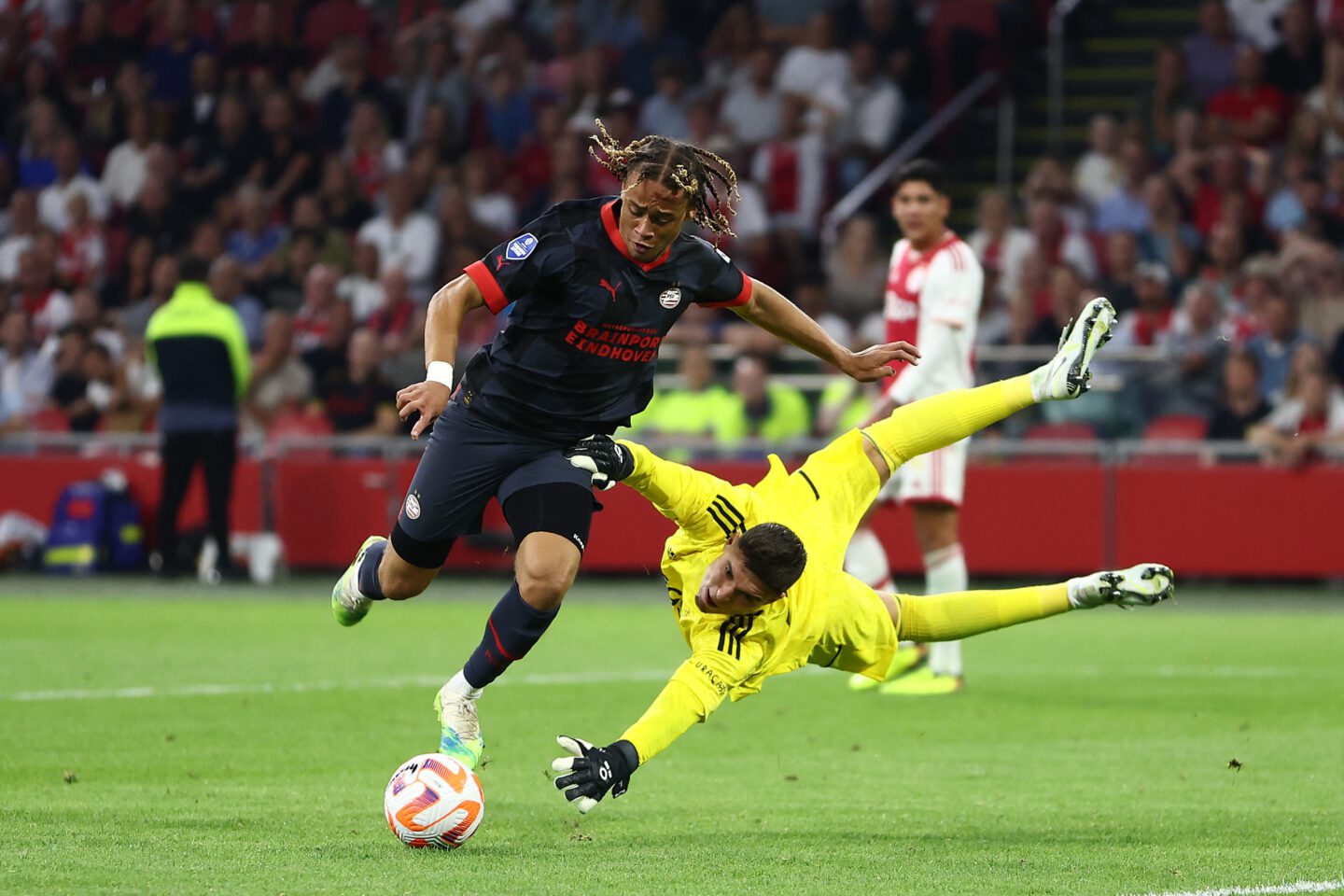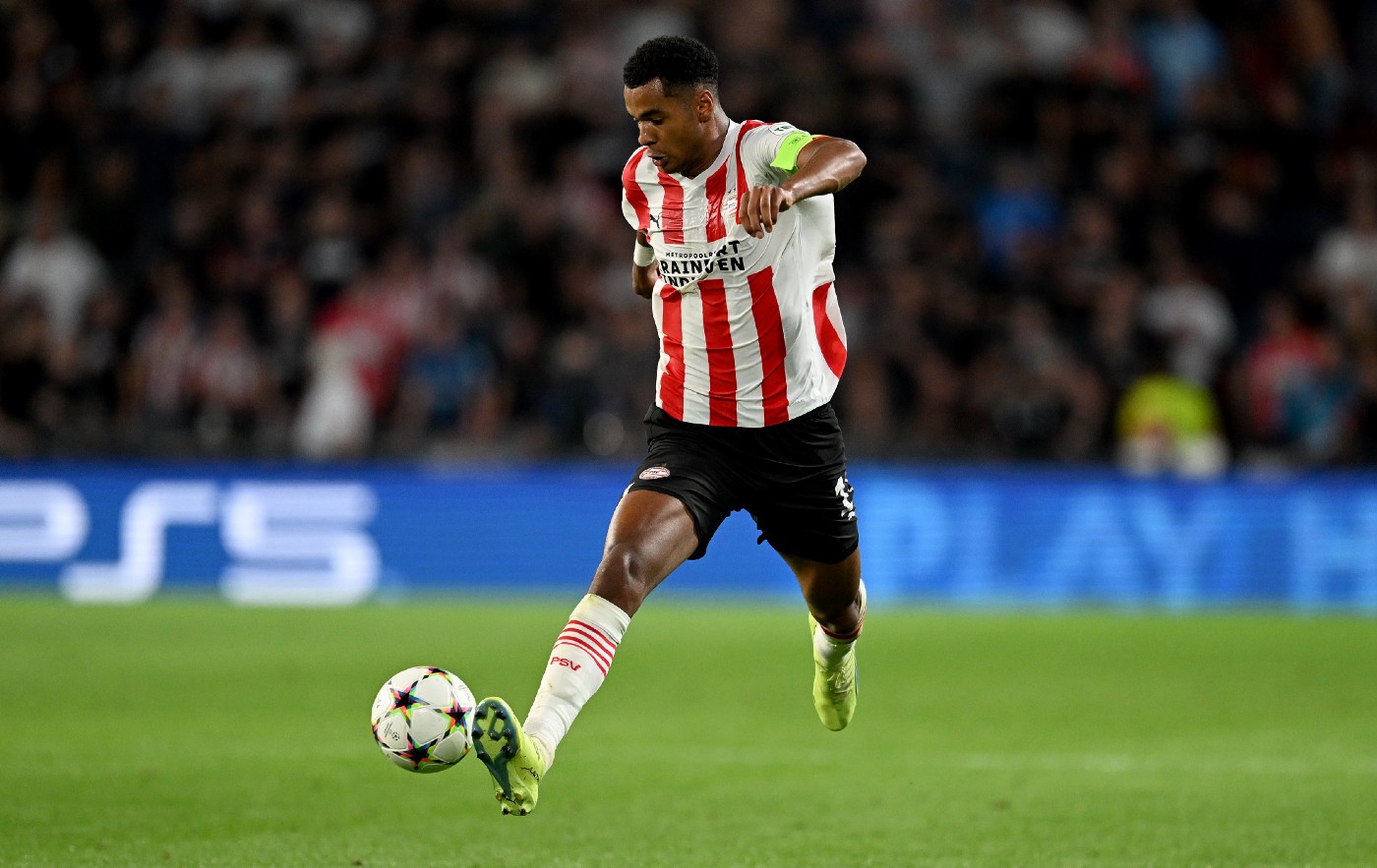With Owen Wijndal leaving AZ in 2022, it was a big question of who would step up to the plate and make an impact for AZ, as they were continuing to develop. And someone did: Milos Kerkez became a sensation both in the Eredivisie and in the Conference League. This saw him getting his transfer to AFC Bournemouth.
In this article, I analyse his performances in the 2022/2023 Eredivisie where I focus on data and video. The data and video has been collected on July 25th, 2023, and comes from Wyscout. The event data comes from Opta.
Contents
- Biography
- Seasonal stats
- Ball progression
- Key passing
- Dribbles
- Shooting
- Final thoughts
Biography
https://cdn.embedly.com/widgets/media.html?type=text%2Fhtml&key=a19fcc184b9711e1b4764040d3dc5c07&schema=twitter&url=https%3A//twitter.com/lambertsmarc/status/1560348007878508545%3Fs%3D20&image=https%3A//i.embed.ly/1/image%3Furl%3Dhttps%253A%252F%252Fabs.twimg.com%252Ferrors%252Flogo46x38.png%26key%3Da19fcc184b9711e1b4764040d3dc5c07

- Name: Milos Kerkez
- Date of birth: 07–11–2003
- Nationality: Hungarian
- Position: Left-back
- Current club: Bournemouth
- Previous clubs: Rapid Wien(Y), Hodmez (Y), Gyor (Y), Milan (Y), AZ
- International: Hungary (8 games)
Kerkez is a very attacking-minded full-back who played on the left side for AZ Alkmaar in the Eredivisie. He loves to progress in the wide areas and interact with both the winger and the strikers, in order to create more goalscoring threats through his progression on the ball.
He has a good ball-striking ability and always tries to come in a situation to either provide a key pass or shoot himself. His crosses are of a high quality and that has provided fruitful, as he was often involved in the attacking phases of the game.
In terms of defending, he definitely needs to learn more. Especially, now he went to Bournemouth and isn’t one of the dominant teams — he will need to improve in defensive action and defensive cover.
The data visuals and video below will show what Kerkez is capable of.
Seasonal stats


In the image above you can see the percentile rank radar of Milos Kerkez and the distribution, based on his defensive data profile. This is in comparison with his peers during the Eredivisie season in the same position. He scores in the high average on most metrics, but as you can see he needs to work on his progressive passing, his interceptions, and his shot-blocking.


In the images above you can see the attacking data profile of Milos Kerkez compared to his peers in the Eredivisie. As you can see he scores high in successful dribbles, touches in the box, aerial wins, non-penalty goals, and expected goals. This gives an indication that Kerkez is a very attacking-minded left-back and that his key qualities lie in that area.
This data does explain a bit about his overall scores in comparison to his peers, but how and where does he make these actions? I will attempt to illustrate that below.
Defensive actions
Kerkez seems to be doing not so great in the defensive metrics compared to his peers, but he does have defensive actions of course. So where does he conduct these defensive actions?

In the visual above you can see where Kerkez conducts his defensive actions, and we can see that his ball recoveries and interceptions are mostly on the own half with a tendency to go into the half-spaces. His tackles, however, are wider and focused close to the line and are spread out more in the defensive third, and middle third.
So how high does he score when looking at the defenders in the league? You can see that in the scatterplot below.

But how does he defend? We have seen where he defends, but what do successful defensive actions look like?
https://cdn.embedly.com/widgets/media.html?src=https%3A%2F%2Fplayer.vimeo.com%2Fvideo%2F848467126%3Fapp_id%3D122963&dntp=1&display_name=Vimeo&url=https%3A%2F%2Fvimeo.com%2F848467126&image=https%3A%2F%2Fi.vimeocdn.com%2Fvideo%2F1702139423-f2f9fa3eed01ad1fb8cd30440aef291dbd6e0d0fc8cb7f73b6ef3b9956d4e0ec-d_1280&key=a19fcc184b9711e1b4764040d3dc5c07&type=text%2Fhtml&schema=vimeo
In the video above you see a compilation of his defensive actions with AZ in several games against top sides. They showcase his ball recovering ability, and how complex (or not) these are.
Ball progression

The modern fullback isn’t only concerned with defending and producing defensive actions — but he/she also needs to be comfortable on the ball and progress play from it.
In the scatterplot above you can see the progressive metrics of progressive passes per 90 and progressive runs per 90. Kerkez does pretty well here as he scores above average in progressive runs, but under average in progressive passes per 90.
https://cdn.embedly.com/widgets/media.html?src=https%3A%2F%2Fplayer.vimeo.com%2Fvideo%2F848473228%3Fapp_id%3D122963&dntp=1&display_name=Vimeo&url=https%3A%2F%2Fvimeo.com%2F848473228&image=https%3A%2F%2Fi.vimeocdn.com%2Fvideo%2F1702147394-cc623832b49885960d2f2489170d3ddd6f6153898ae5649ebb9b35e230960f6a-d_1280&key=a19fcc184b9711e1b4764040d3dc5c07&type=text%2Fhtml&schema=vimeo
Ball progression can have via different aspects of the game, but I wanted to look at his abilities on the long ball. He can use it to connect with the attacking third or to get out the press of the opposition.
Kerkez uses these balls to progress the play, sometimes to beat the press and sometimes just as a link-up option, but he uses the long balls to progress play on the same flanks.
Key passes
Every player makes passes in a game, but which passes actively contribute to the progression and construction of an attack? You can see some of these metrics in the beeswarmplot below.

As you can see in the graph above, Kerkez scores high in most metrics, and this is compared to all players in the Eredivisie with at least 900 minutes played. Especially his key passes per 90 and the passes to the penalty area per 90.
What’s interesting is how he makes through passes. He scores in the high average, but the intent of his through passes does tell a lot about how he can help in an attack.
https://cdn.embedly.com/widgets/media.html?src=https%3A%2F%2Fplayer.vimeo.com%2Fvideo%2F848477133%3Fapp_id%3D122963&dntp=1&display_name=Vimeo&url=https%3A%2F%2Fvimeo.com%2F848477133&image=https%3A%2F%2Fi.vimeocdn.com%2Fvideo%2F1702152657-42b6d9786d4cfbf8ac878980dc55a0e6a16187f55eabc7c34473f0f04ebca8dd-d_640&key=a19fcc184b9711e1b4764040d3dc5c07&type=text%2Fhtml&schema=vimeo
Dribbles
https://cdn.embedly.com/widgets/media.html?src=https%3A%2F%2Fplayer.vimeo.com%2Fvideo%2F848478560%3Fapp_id%3D122963&dntp=1&display_name=Vimeo&url=https%3A%2F%2Fvimeo.com%2F848478560&image=https%3A%2F%2Fi.vimeocdn.com%2Fvideo%2F1702155241-caa3511ac4e319bd53f027656b6fd25616b9d6068beee83ad74591a7a8d2f3b0-d_1280&key=a19fcc184b9711e1b4764040d3dc5c07&type=text%2Fhtml&schema=vimeo
Kerkez is known to get forward a lot and into the wide areas of the final third. He is quick, agile, and knows how to beat his direct opponent in a 1v1, but also carries the ball into the half-space to orchestrate play from there.
Shooting

In the shot map above you can see where Kerkez has conducted his shots in the 2022/2023 Eredivisie season. He had 25 shots of which 3 went in goal. He generated a total xG of 2,52 — the latter meaning that he is overperforming with +0,48.
Apart from shooting in the box, he loves to shoot from zone 14 and left from that zone — as that is the zone where comes frequently and tries to shoot from a distance. But most shots come from inside the penalty area, just like where he scored his goals.
Final thoughts
In this data-heavy article, we have looked at some of his key qualities on the ball and it’s quite evident that he was one of the best in the Eredivisie when it comes to how he attacks. His passing game and attacking tendencies were one of the best, but his defensive qualities in terms of tackling, ball recovering, and interceptions — can definitely be improved. If he does that, he might be a successful player on Premier League level.

































































































